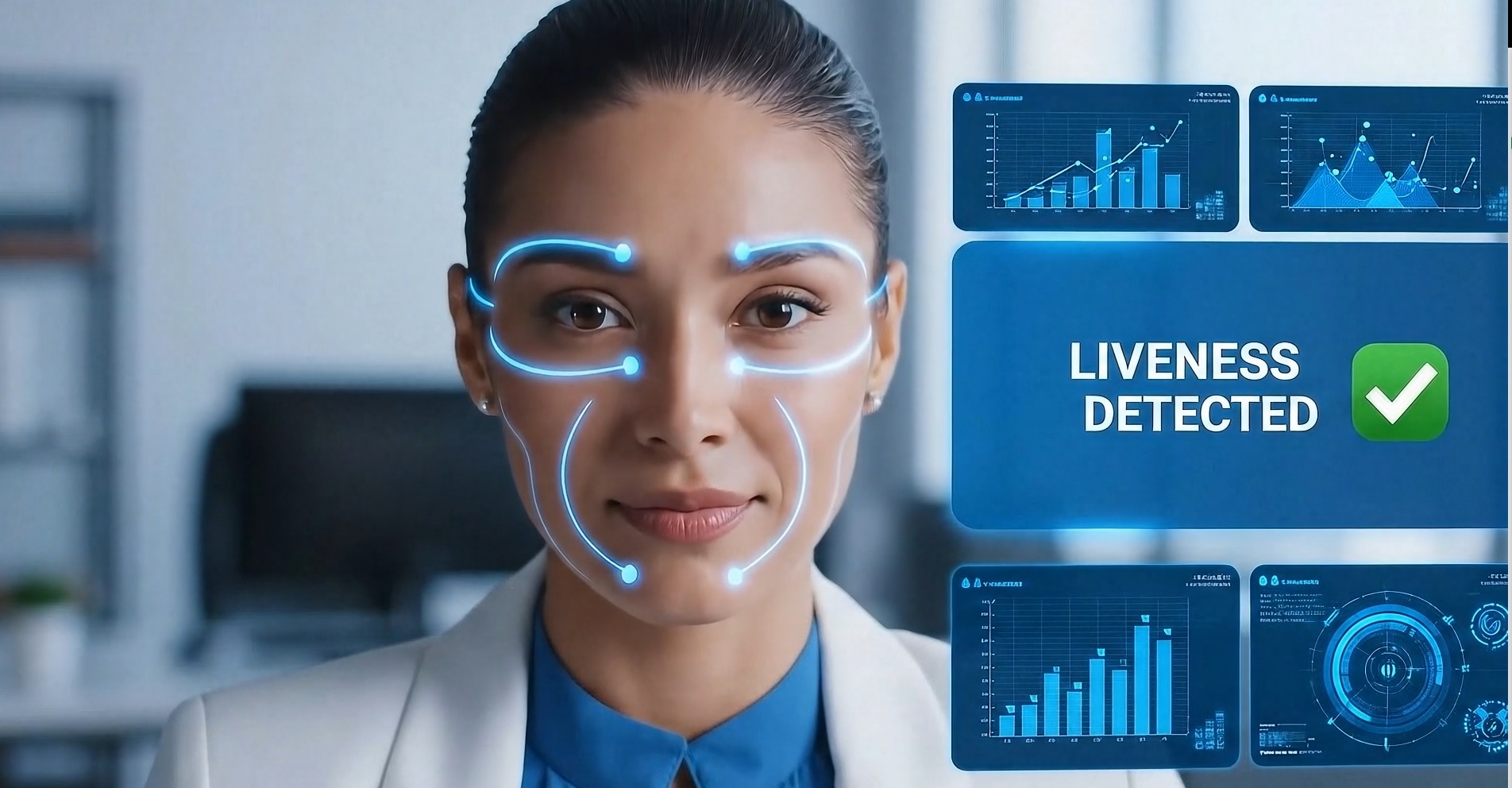In our fast-paced digital world, trust is no longer given; it must be verified. We are living through an “identity authenticity crisis” where distinguishing between real and synthetic online interactions becomes increasingly complex. As AI rapidly advances, sophisticated impersonations and deepfakes challenge our very perception of digital reality. By 2025, experts predict a crucial shift to a “trust nothing, verify everything” mindset, making robust AI identity verification essential for every online interaction.
This fundamental re-evaluation of trust is reshaping industries globally. From banking to healthcare, and from e-commerce to government services, the need for definitive identity verification is paramount. Traditional methods for Know Your Customer (KYC) are struggling to keep pace. They are often slow, prone to human error, and vulnerable to increasingly sophisticated fraud tactics. This is precisely why cutting-edge AI-driven solutions are not just improving identity verification—they are fundamentally redefining online security and trust.
The Imperative for AI in Identity Verification
The digital landscape is changing at an unprecedented rate. Automated internet traffic now surpasses human traffic, and projections suggest AI systems could account for over 90% of all internet activity by 2030. This surge, while not entirely malicious, creates immense challenges for identifying genuine users. The inability of traditional CAPTCHAs to differentiate humans from advanced AI further complicates matters. Businesses face a constantly evolving identity landscape, characterized by:
Sophisticated Fraud: Fraudsters leverage AI to create synthetic identities and convincing deepfakes, launching large-scale automated attacks that bypass older security measures. Identity fraud costs businesses billions annually.
Regulatory Fragmentation: Navigating diverse and constantly changing global compliance demands across various jurisdictions, industries, and identity use cases is a major hurdle.
Consumer Privacy Demands: Users are increasingly wary of sharing personal and biometric data. They demand seamless online experiences without compromising data protection and expect greater transparency from businesses regarding their security practices. Alarmingly, 89% of consumers are concerned about AI’s impact on identity security, and 97% worry about their personal data online.
These challenges highlight why AI identity verification isn’t just an upgrade; it’s a strategic necessity. It provides a dynamic, configurable foundation capable of adapting as regulations shift, fraud tactics evolve, and use cases expand.
How AI Fortifies Digital Onboarding and Security
Modern AI identity verification systems integrate multiple advanced technologies to create a seamless yet ironclad security layer. This combination of capabilities makes them uniquely effective against current and future threats:
Real-Time Liveness Detection
Combating deepfakes and spoofing attacks is critical. AI-powered liveness detection ensures the person in front of the camera is a live, real individual—not a photo, video, or AI-generated fake. Techniques include:
Blink detection and micro-expression tracking
3D facial mapping
Behavioral inconsistency analysis
This technology actively prevents fraud attempts where static images or pre-recorded videos are used to bypass verification.
Intelligent Facial Recognition and Document Matching
Your face becomes your secure digital key. The system compares a live selfie with the photo on a government-issued ID. This crucial step confirms you are the rightful document owner. AI algorithms analyze subtle facial features and perform sophisticated pattern matching, ensuring a high degree of accuracy.
Advanced Optical Character Recognition (OCR)
AI-driven OCR goes beyond simple text extraction. It accurately pulls information from national ID cards, passports, and driver’s licenses. Advanced OCR systems include:
Smart OCR for document recognition with forgery checks
Automatic data validation
Elimination of manual entry errors and typos
This capability ensures data integrity and significantly speeds up the verification process.
Comprehensive Compliance and Risk Management
For regulated industries like fintech, healthcare, and government, compliance is non-negotiable. Modern AI identity platforms are built to adhere to global regulations such as GDPR, CCPA, AML/KYC, and specific country-level mandates. Some systems even integrate features like “RiskShield” for real-time transaction risk monitoring, proactively intervening against fraud.
The Seamless AI-Powered Verification Flow
The user experience with AI-powered identity verification is designed for speed and simplicity, making digital onboarding frictionless:
-
- Initiation: The user accesses the app or website and begins the verification process.
- Selfie Capture: The user takes a live selfie, which is instantly analyzed by the AI for liveness detection and facial biometrics.
- Document Scan: The user uploads or scans their government ID (e.g., passport, national ID card, driver’s license).
- AI Processing: In mere seconds, the AI system performs simultaneous checks:
Confirms liveness.
Matches the live face to the ID photo.
Extracts and validates ID data using advanced OCR.
Conducts real-time fraud checks (including deepfake indicators, document tampering).
-
- Onboarding Complete: Verification is confirmed, and the user gains immediate access, often within moments.
This entire process requires no human intervention, ensuring both speed and heightened security.
Global Impact: Who Benefits from AI Identity?
The applications for advanced AI identity verification span virtually every sector engaged in digital transactions or sensitive data handling:
Banks & Fintechs: Enable real-time KYC, preventing fraud in transactions and new account openings, crucial for rapid scaling in emerging markets like India.
eCommerce & Marketplaces: Secure platforms by verifying sellers and buyers, combating fake accounts, and fostering greater trust that boosts buyer retention and seller confidence.
Healthcare: Ensure secure patient identity access to online portals, protecting sensitive medical data and ensuring compliance with privacy regulations.
Crypto & Web3: Provide rapid, compliant KYC solutions for decentralized finance and blockchain applications, critical for regulatory adherence and trust in new economies.
Government Portals: Prevent identity fraud and secure citizen access to sensitive government services. Initiatives are pushing for modern digital credentials like mobile driver’s licenses to transform public services, enhancing security and efficiency.
Platforms like Cashfree Payments’ Secure ID in India demonstrate how modular, multilingual, and fraud-resilient digital identity infrastructure can empower financial institutions to scale rapidly, leading to impressive outcomes like 80% increases in user conversions and 75% reductions in operational costs.
Building Trust in an Agentic AI World
As AI systems become more prevalent, the challenge shifts from “is this a bot?” to “who is the bot acting on behalf of, and what is their intent?” Identity is emerging as the crucial “linchpin” for establishing trust in this agentic AI future. This necessitates a “verified identity layer” across the internet.
Building this trust requires more than just technology; it demands transparency and equity. Consumers need confidence that their data is stored securely and used only for authorized purposes. With 67% of Americans worrying daily about online data breaches, agencies and businesses must clearly communicate how user data is collected, stored, and utilized.
Key to widespread adoption are:
Interoperability: A unified framework to ensure seamless acceptance of digital IDs across diverse platforms and agencies.
Equity: User-friendly platforms, multi-language support, and compatibility with older devices to ensure all citizens can access and benefit, regardless of digital literacy or geography.
-
-
- Robust Privacy Measures: Data minimization, strong encryption, and compliance with regulations must be integrated into digital ID systems from the outset.
-
Lessons from international precedents, such as the European Union’s eIDAS framework, offer a blueprint for achieving interoperability and data security on a broad scale. The future of trust hinges on secure, interoperable, and citizen-centric digital identity ecosystems.
The Future is Verified
The push for AI-powered identity verification represents a historic opportunity to reshape digital interactions. By combining advanced biometrics, liveness detection, and intelligent OCR, these systems offer a level of security and efficiency previously unimaginable. They are not merely reactive protections against fraud; they are proactive drivers of business growth, enabling seamless user experiences and fostering profound trust. This strategic investment is vital for long-term success and competitiveness in an increasingly digital and AI-driven world.
Frequently Asked Questions
How does AI-driven identity verification combat deepfakes and advanced fraud?
AI-driven identity verification systems tackle deepfakes and advanced fraud by employing multi-layered defenses. They utilize real-time liveness detection with techniques like blink and micro-expression tracking, along with 3D facial mapping, to confirm the physical presence of a live individual, not a synthetic imitation. Furthermore, AI models analyze thousands of data points during verification sessions, checking for behavioral inconsistencies, document tampering, background anomalies, and specific deepfake indicators. This proactive, adaptive approach allows for intelligent and adaptive real-time identity verification and risk scoring, effectively combating sophisticated fraud tactics like synthetic identities and automated attacks.
What key benefits can businesses expect from implementing AI identity verification?
Businesses implementing AI identity verification can expect significant benefits including instant user onboarding (often in seconds), leading to up to an 80% improvement in user conversion rates by eliminating manual reviews and friction points. Operational costs can be reduced by as much as 75% due to automated processes and increased agent productivity (e.g., handling over 200 verification calls per day). These systems provide deepfake-proof security and significantly reduce identity fraud risks. Additionally, they ensure 100% compliance with global regulations like GDPR, CCPA, and AML/KYC, providing legal peace of mind and enabling seamless scalability across markets, fostering greater trust and a competitive advantage.
What role will digital wallets and AI play in the future of digital identity?
Digital wallets are poised to become central to the future of digital identity, serving as secure repositories for verified digital credentials. As the world moves towards a “trust nothing, verify everything” mindset, these wallets will empower users to securely conduct transactions, travel, and instantly verify identities across various platforms. AI will play a critical role in this ecosystem by mediating a significant majority of online interactions (projected 90% by 2030). This necessitates a robust “verified identity layer” built on AI, where verification becomes the new authentication. AI will power the underlying security, risk assessment, and fraud prevention for digital wallets and government digital ID initiatives, ensuring trust in an increasingly agentic AI-driven online environment.
📞 Ready to Future-Proof Your Identity Verification?
Whether you’re a startup or an enterprise, our solution can be tailored to your needs. Book a costumized demo at : info@quantosei.com or check the generic demo at kyc.quantosei.com, and discover how simple it is to integrate bulletproof identity verification into your platform.




